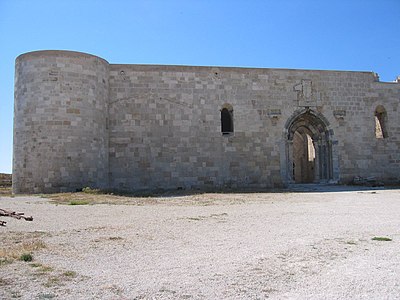|
|

This is a file from the Wikimedia
Commons. Click the pic to see its description page and licensing.
SYRACUSE
A strong process of Christianity
then came about, testified by the presence of remarkable catacombs
throughout the territory. In 313, Syracuse
became a Episcopal seat with the edict of Costantino.
After the Vandali massacre and the pause of the Ostrogoth
Reign, Syracuse was conquered in 535 by the Byzantine
General Belisarius and annexed for three centuries to Constantinople.
In 878, the Arabs
arrived, who after devastating and plundering the City, made
it the main town of Val di Noto.
In 1038, the Greek Byzantine captain George
Maniaces, reconquered the City and left his
mark in the layout of the City with the construction of a
castle on the Island of Ortigia, which still
carries his name.
During the Norman era (1086), Count Ruggero
applied Christian politics to the City by
means of the renovation of the Cathedral and the construction
of new churches.
It was then ruled by the Genovese from 1205
to 1220, then reconquered by the Swabians
and declared State property, whilst in the City new religious
orders were installed: the Franciscans and Dominicans.
After the Angioina stint and the Vespers
experience, the City passed hands to the Aragonese
and new churches were founded and new noble buildings were
constructed.
In the ‘500s, a further 2 monasteries
were built, giving rise to two new religious orders: the Jesuits
and the Carmelites. After a project of building
restoration, the City successively assumed a strong Baroque
appearance. The process was interrupted by the earthquake
of 1693, which destroyed a large part of the City.
All of the following centuries saw the citizens employed in
its reconstruction.
With the coming of the Bourbons and the diffusion
of liberal ideology, Syracuse participated in the popular
revolts against the Crown, paying a price with the transfer
of the main town to Noto and a consequent social impoverishment.
After the unification to the Reign of Italy (1860),
its fortified City walls were pulled down, whilst during the
Fascist era (1934-36), a bridge was built
connecting the mainland to the Medieval Island of Ortigia.
|
|
|
